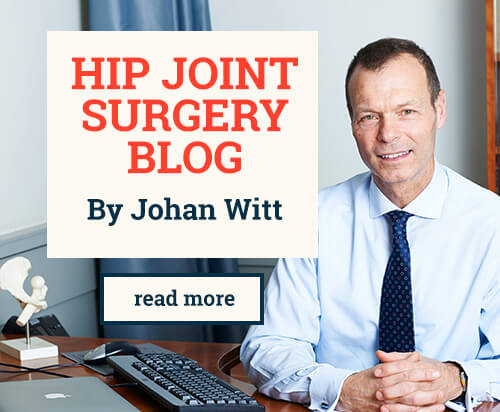What’s new in PAO (Periacetabular Osteotomy) Surgery?
March 1, 2019
At the recent meeting of the International Society for Hip Arthroscopy and Hip Preservation, in Melbourne Australia, there was a lot of interest in the idea of a less invasive way of performing a PAO. The original description of the PAO was for it to be performed through a rather large surgical approach and the scar that resulted did not heal in a very cosmetic fashion.
We published our outcomes using a minimally invasive technique last year (Bone and Joint Journal 2017;99-B:22–8 ) and this related to a technique that we developed and have used since 2010. I was asked to give a number of presentations at the meeting relating to the role of a minimally invasive PAO and the technique involved and there is clearly a lot of interest in this.
One of the barriers to some surgeons accepting that open hip surgery such as the PAO, is effective, is because they feel it is relatively invasive when compared to hip arthroscopy . Increasingly, however, it does appear that those persisting with only hip arthroscopy are seeing increasing complications and poor longterm success rates with this approach and so there is now more interest in the PAO particularly in a less invasive form.
There continues to be a lot of debate on what constitutes mild dysplasia and whether hip arthroscopy can continue to be effective in these milder cases. The difficulty is establishing what is really mild and often only one measurement on an X-ray is used to make this assessment – the lateral Centre – Edge angle.
There are a number of other features that can make a hip unstable apart from the centre edge angle , such as the slope of the weight bearing zone of the joint and also the femoral neck anteversion ( the amount the top of the femur points forward). If these other aspects driving potential instability are not recognized then poor results may follow.
It is clear that complication rates from this type of surgery directly relate to the experience and numbers of cases being operated on by the surgeon. With regards to the PAO, we presented out complication rates in over 200 cases using the minimally invasive technique. Fortunately the serious complication rate is extremely low, for instance there were no injuries to major nerves around the hip or pelvis. The infection rate was less than 0.5% and the risk of thrombosis (blood clots) was less than 0.3%.
We did identify some greater risk of complications in patients with higher weight and those with significant hypermobility. These tended to be rather minor issues, but certainly can make recovery more prolonged.
The issue of stress fractures elsewhere in the pelvis remains a concern. These show up as a break in the bone at some distance from the site of the osteotomy and occur at some point during the rehabilitation – often several weeks after the surgery. Mostly they heal by themselves and they may never have caused any symptoms. Very occasionally they may necessitate further intervention in the form of bone grafting and applying a plate to the pelvis to allow the break to go on and heal.
Anything that can be done to accelerate the healing of the bone is likely to be helpful and speed up recovery. One of the sessions at the meeting was on PAO surgery in adolescents and it is apparent that in the younger age group the pelvis heals very quickly and reliably. The recovery and return to sport and higher levels of activity within 5-6 months is very apparent in this age group.
Unfortunately there continue to be significant delays in diagnosis in patients with hip dysplasia and it can still take many years for the condition to be recognised as the reason for hip pain. Awareness in the primary care setting and amongst physiotherapists remains a very important area that can speed up the referral of patients with this condition




Speak Your Mind